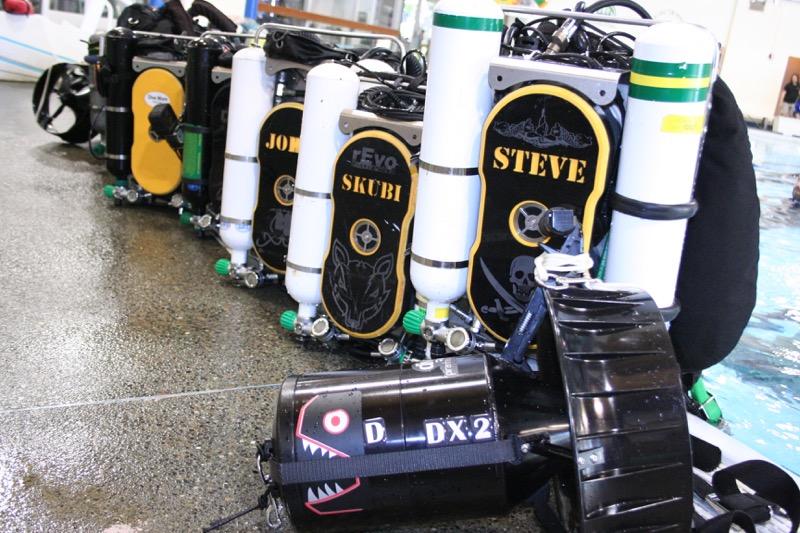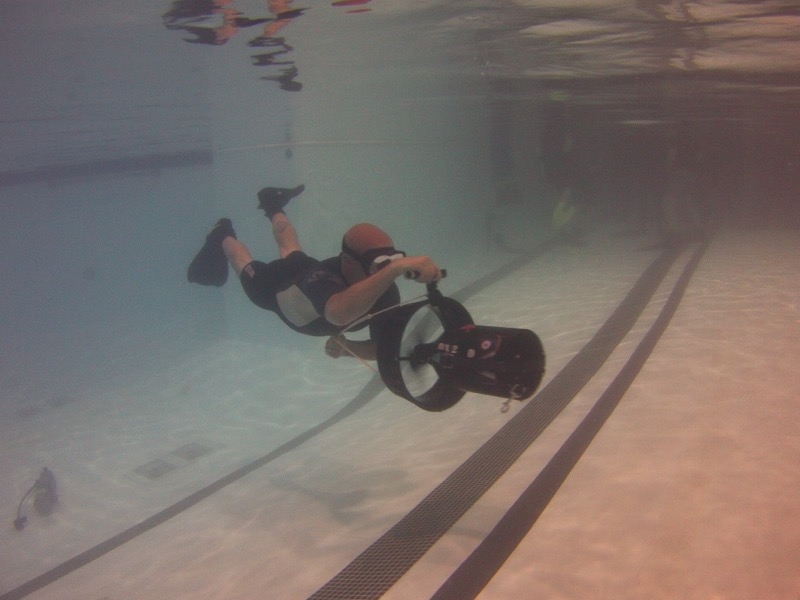On a rare 95 degree day in western Washington, when many were out enjoying the hot sun, a group of Northwest dive enthusiasts were braving the hot confines of a side room at the Mt. Lake Terrace Pool and Rec Pavillion near Seattle, Washington for an in-depth look at closed circuit rebreathers (CCRs), what they are, how they work, and why they would want to dive with one.
Led by legendary CCR instructor Dr. Mel Clark of CCR TEC, the demo started out with a presentation about closed circuit rebreathers, their benefits and their downsides. With plenty of time padded in for questions and answers, the participants were able to get well versed in rebreather basics, including a whole new diving vocabulary with terms like counterlungs, DSV (dive surface valve), and OPRV (overpressure relief valve).
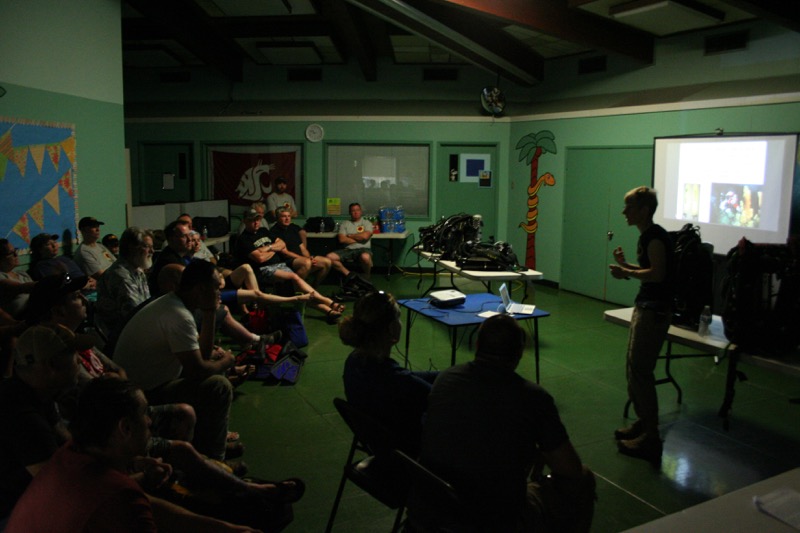
Dr. Mel Clark started out the demo with a presentation discussing the what, how and why of closed circuit rebreathers.
After the slide presentation, Mel took the group right into the guts of rebreathers by dissecting a few of the more popular rebreathers, this was a fantastic chance for the participants to see exactly how the various models were put together, their differences and their individual features up close and personal.
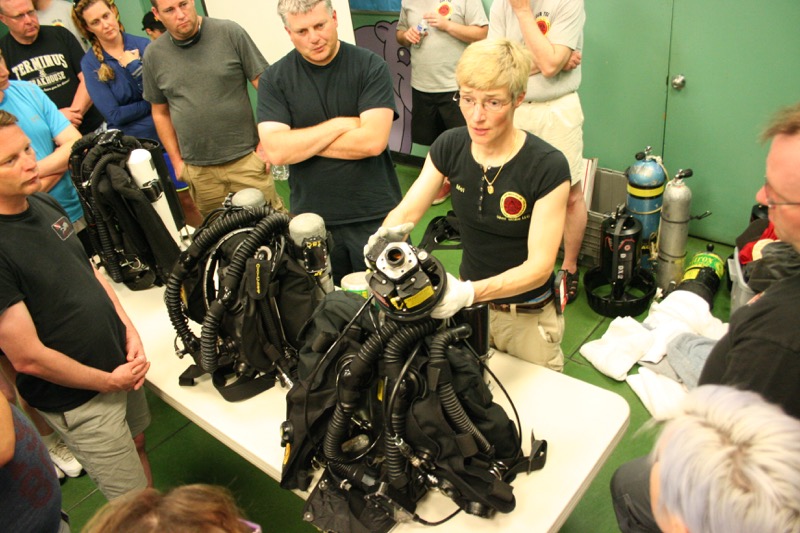
Mel started the show and tell section by dissecting an ISC Megalodon APECS 2.07 rebreather (www.megccr.com) with OTSCL (over the shoulder counterlungs). Though it’s an older model, the Meg APECS is an excellent unit and is commonly found on the used market at good prices.
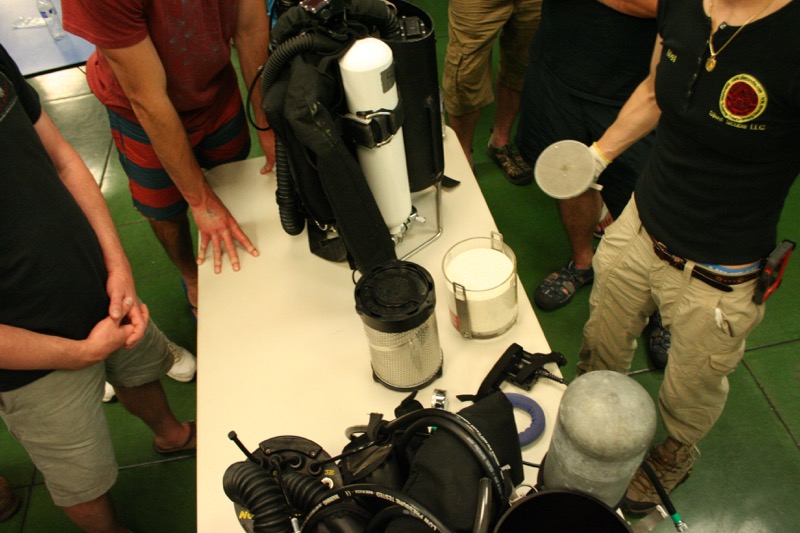
Next up for the teardown and inspection was ISC’s newest model, the Meg 15 with TOSCL (top of shoulder counterlungs). Here Mel discusses the difference in scrubbers between the older Meg APECS and the newer Meg 15.
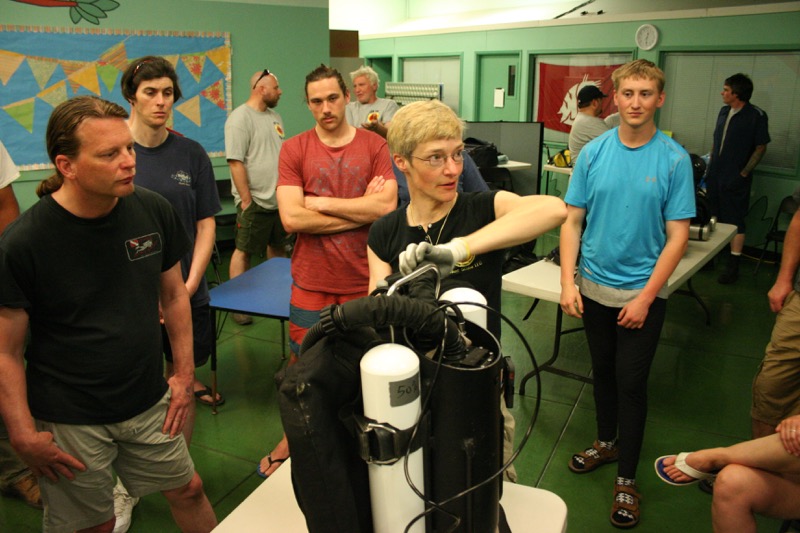
A JJ rebreather (jj-ccr.com) with BMCL (back mounted counterlungs) was on the block next. This multi-model side-by-side show and tell gave everyone a very interesting view of how similar, yet how different the various style rebreathers are.
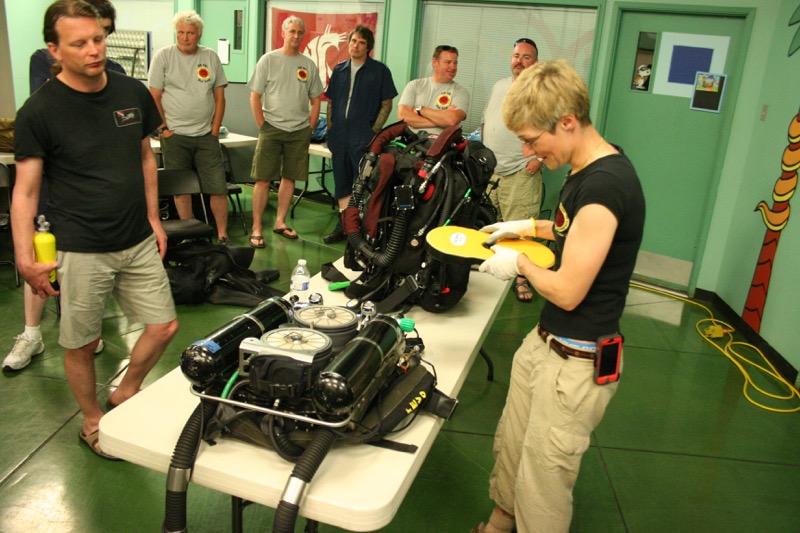
Last up was a rEvo rebreather (www.revo-rebreathers.com) which gave participants a shift in design style, away from the single vertical scrubber can style units toa twin horizontal scrubber case with protected back mounted counter lungs.
With the show and tell part of the demo completed, the class took a quick break for lunch and then it was on to the most anticipated part, the pool session. For this, Mel had 10 rebreathers available to try-out in the pool; the aforementioned units in the show and tell section were joined by another Meg, four more rEvos, and an Optima.
To get 10 top-end rebreathers on hand to demo is a small feat in itself, to get another 12 CCR trained dive staff to assist with the demo is real tough, to get them all together in the same pool at the same time? For Mel it was simple, put out calls to her local CCR dive buddies and past students and ask them to bring out their personal units. Many of these assisting dive supervisors have been diving rebreathers for a number of years and have hundreds of hours on their units, bringing a great level of personal experience to the pool.
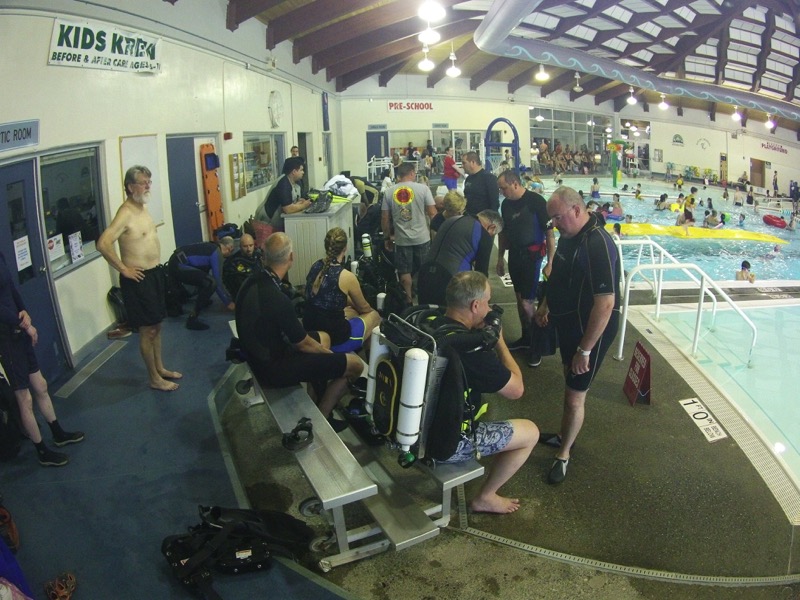
While waiting for the reserved pool time to arrive, the assisting dive supervisors helped participants into the various rebreathers and debriefed them on the controls. With a 2 to 1 ratio of participants to rebreathers, a person didn’t have long to wait for their turn on a machine.
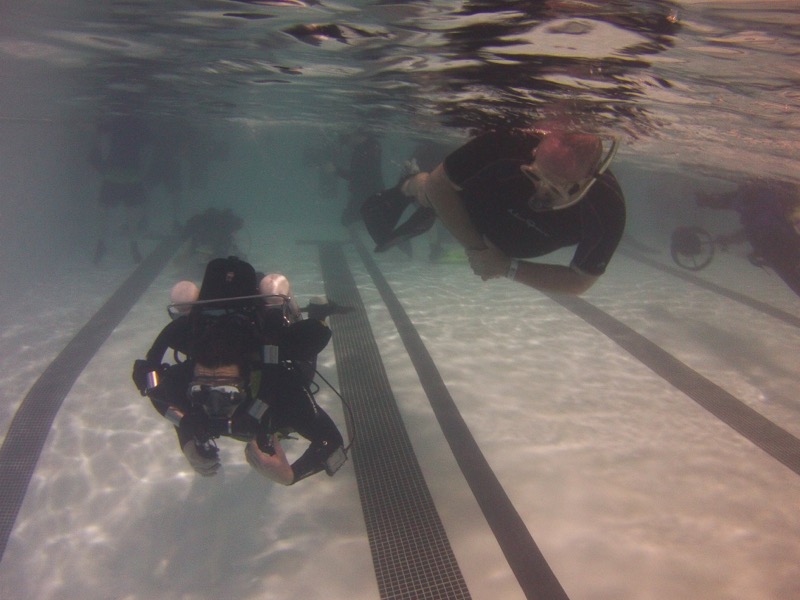
Dive supervisor John keeps a watching eye as a participant gives John’s rEvo hCCR a demo dive. This particular rEvo was equipped with a Shearwater NERD (near eye retinal display), a full CCR dive computer in a small heads up display that is very impressive.
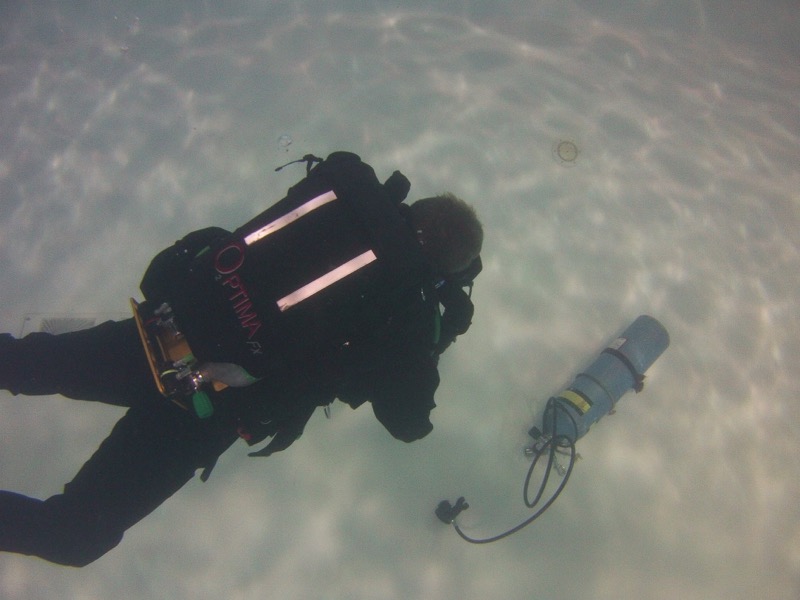
One rebreather that wasn’t dissected in the show and tell, but was well sampled in the pool demo was the Dive Rite O2ptima (www.diverite.com). This Optima uses the Extendair absorbent cartridges instead of the packed granular absorbent/scrubber basket combo found in the other rebreathers. Note the bailout cylinder on the bottom of the pool; the CCR TEC staff took every step possible to be ready for any mishaps.
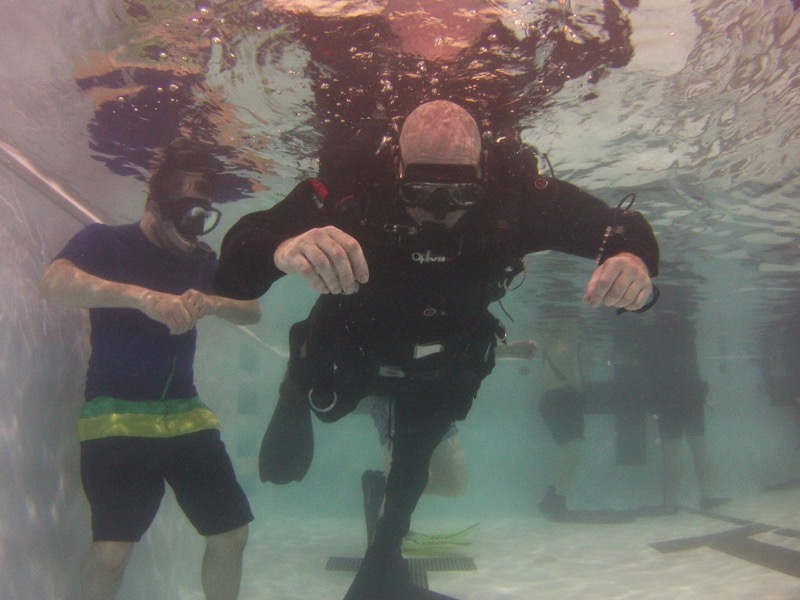
Under the watchful eye of dive supervisor Jared, the author drops into the shallow end equipped with a JJ rebreather. Each dive supervisor followed their respective rebreather and the person trying it out throughout the whole dive, which lasted anywhere from a couple minutes up to 10 minutes as the pool session wore on.
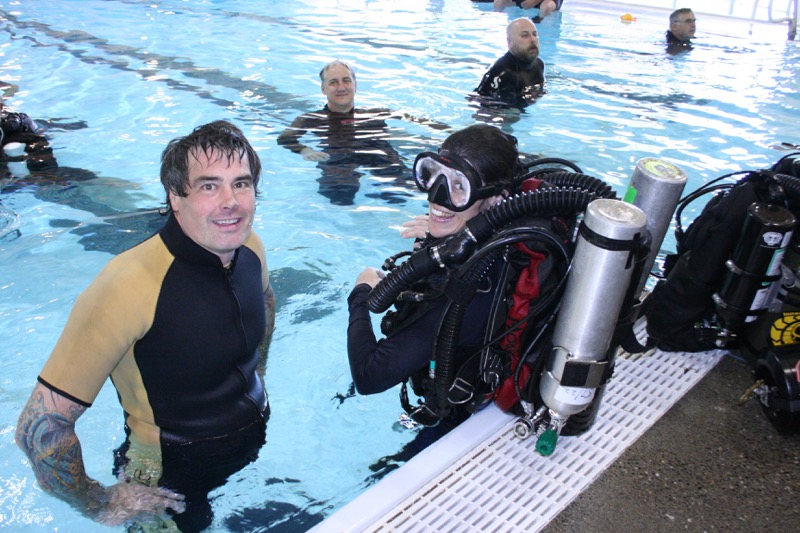
Technical DM Erik and participator Charlene showing big smiles after her try dive on Erik’s ISC Meg rebreather. Erik has a huge amount of hours on his Meg, divingeverything from wrecks to historical sites to caves.
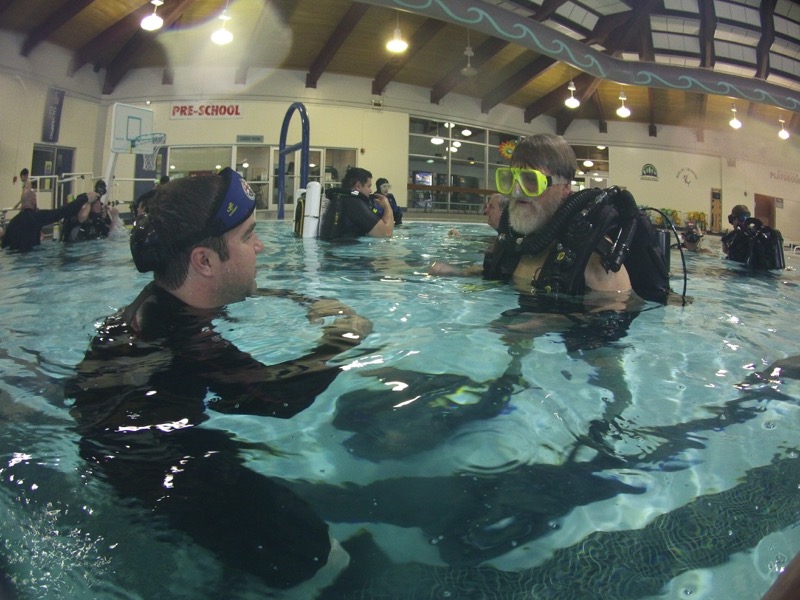
Another happy participant discussing the finer details of running a Meg 2.07 with dive supervisor Ben.
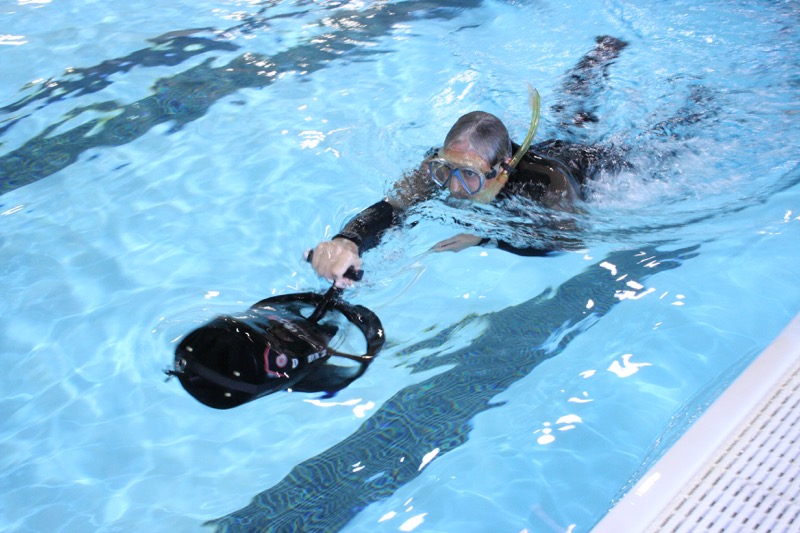
An added bonus to the demo day was a couple of Piranha P1 scooters on loan from Dive Xtras (www.dive-xtras.com) that were available to participants to take for a short spin around the pool. With scooters being the perfect companion dive tool for rebreather dives, this was a natural add-on to the demo and way too much fun if that is possible.
Ever wanted to give a rebreather a try? Maybe a rebreather demo day is the perfect way for you to find out the how, what and why of a rebreather.
Big thanks out to Mel Clark and the crew at CCR TEC, the dive supervisors and also out to Dive Xtras for putting on a great day of fun.
Story and photos by Tim Lund
Photos taken with Canon Rebel, Iphone 6 and Sealife Micro HD.

